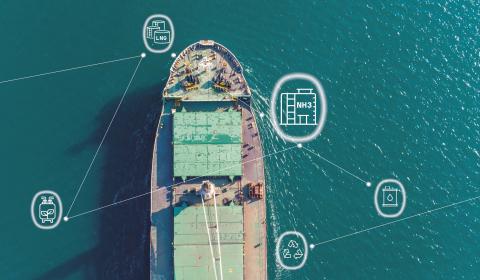
Autonomous ships: where do we really stand?
Advances in autonomous technology offer shipowners advantages in terms of safety and cost. They also raise regulatory challenges.
The word “autonomous” tends to conjure up futuristic images of robot ships plying the world’s oceans, not a human in sight. The reality is likely to be more prosaic.
While advances in autonomous technology are making unmanned short seagoing ships, offshore survey vessels and military vessels possible, fully autonomous deep-sea ships remain a pipe dream. Shipowners’ twin priorities are operating costs and safety. The investment required to automate a bulk carrier or containership to a level where it could safely sail without crew is today still eye-watering. Compared to the regular cost of running a standard crew of 10-35 people, the numbers simply don’t stack up – yet.
What is a viable goal today is the automation and integration of some critical onboard systems, a move that could reduce crew size and significantly improve safety.
Evolving from decision support to autonomous navigation
Features that provide decision support – similar to driver-assist systems in the automotive industry – represent the most fruitful target in the short-term. Such technology offers clear safety benefits. By collecting and analyzing data, for example on nearby traffic, smart systems provide crew with better situational awareness. They can also offer advice on the best decisions to make in line with vessel traffic regulations.
The next logical target is autonomous navigation systems. In this scenario, a ship would be able to steer itself under the supervision of crew, much as a commercial airliner uses autopilot to reach its destination under the watchful eye of a pilot. The automated navigation system would need to be capable of situational awareness, route planning and steering. A system has been successfully tested as part of a JIP in the Netherlands.
At what point does autonomous demand AI?
From this point, however, further automation starts to look harder. Even fully autonomous navigation remains an elusive goal, as computers still tend to struggle with complex traffic around coastal areas. Automated navigation systems are built around the idea that traffic is relatively sparse, and that vessels are behaving in accordance with international regulations for preventing collisions (COLREGs). The issue is that around the coast, a ship can be confronted with upwards of four surrounding vessels, including pleasure boats which may behave erratically. Any onboard navigation system would require some level of machine learning to collect data, assess its value and use intelligent algorithms to analyze the pattern and make intelligent decisions suited to the situation.
But the real stumbling block is propulsion. Ship engineers regularly check fuel oil powered propulsion systems, inspecting filters and unblocking them when necessary. This simple task, and other typical maintenance duties that form part of the day-to-day life of crew members, are beyond the capability of industrial robots today. To be fully autonomous, a ship would require a much more reliable propulsion system that rendered frequent maintenance unnecessary, with equipment driven by data and software. This means one word: electrification.
Overcoming regulatory hurdles
The barriers may be high, but the industry is moving inexorably towards higher levels of automation and remote access, and regulation will need to keep pace. IMO has launched a regulatory scoping exercise to understand autonomous technology and how it should be regulated going forward. Bureau Veritas, which is involved in the IMO developments , a range of industry projects and the EU H2020 projects Autoship and Novimar, is issuing the second edition of its Smart and Autonomous Shipping Guidelines this year.
Even the economic argument may soon be flipped on its head: seaborne trade, having hit 10.7 billion tons in 2017, is expected to continue to grow at 2-5% per year, and operators are already struggling to find crew. This could provide the catalyst the industry needs to invest. Automation could be here sooner than we think.
Marine Marketing and Sales Director
A viable goal today is the automation of some critical onboard systems, a move that could reduce crew size and significantly improve safety.











